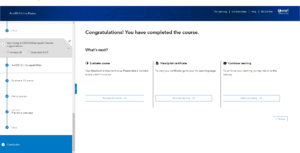In this course
My first application was built on the skills I acquired in Chapter 2 of the smart mapping unit. Within this application, I displayed the gdp per capita for each county in Ohio. My interest in economics fueled my choice of this specific data set.
https://owugis.maps.arcgis.com/home/item.html?id=c2ac9bf71d7c403982eb222dfd6c2fea
My second app was built upon the skills I learned in the previous chapter on web scenes. I created a dynamic 3D map that visualized the growth of wholesale versus retail trade specifically within the state of Ohio.
https://owugis.maps.arcgis.com/home/item.html?id=5ab7f3709fbf44999b1a86d0a83b820b
